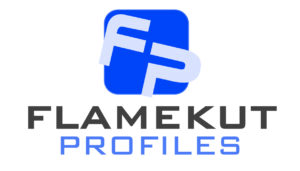What is Flame Cutting?
In the world of metalworking and fabrication, various cutting methods have emerged over the years, each with its unique set of advantages and applications. Among these techniques, flame cutting has stood the test of time, serving as a fundamental process in the manufacturing and construction industries. In this blog post, we will delve into the intricacies of flame cutting, exploring its history, the process involved, its applications, and its relevance in modern-day metal fabrication.
A Brief History of Flame Cutting
Flame cutting, also known as oxy-fuel cutting, has a rich history that dates back to the 19th century. The technique emerged as an effective method for cutting and shaping metal materials, particularly steel, before the advent of modern technologies. Initially, it was primarily used for industrial purposes, such as shipbuilding, automotive manufacturing, and construction.
The development of oxy-fuel cutting gained significant momentum during the early 20th century, especially during World War I and World War II, as it became an essential method for fabricating weaponry and machinery. Over the years, advancements in technology and the introduction of more sophisticated cutting methods have not rendered flame cutting obsolete. Instead, it has retained its relevance due to its cost-effectiveness, simplicity, and ability to handle thick materials efficiently.
The Flame cutting process
Flame cutting involves the use of a highly focused, high-temperature flame to heat and subsequently melt through metal materials, allowing for precise and accurate cutting. While the process may seem straightforward, it requires a skilled operator who understands the intricacies of controlling the flame and manipulating the metal to achieve the desired cuts.
The key steps in the flame cutting process include:
Preparation: Before initiating the cutting process, the metal surface must be thoroughly cleaned and prepped to ensure optimal results. Any impurities or contaminants on the surface can affect the quality of the cut.
Setting Up Equipment: The equipment used in flame cutting includes a cutting torch, fuel gas supply, and oxygen. The torch produces a focused flame that is directed onto the metal surface to create the desired cut.
Ignition and Heating: The operator ignites the torch, allowing the flame to heat the metal to its ignition temperature. Oxygen is then introduced into the torch, intensifying the heat and initiating the cutting process.
Oxidation and Cutting: As the heated metal reacts with oxygen, it undergoes rapid oxidation, forming metal oxides that are expelled from the cut. The operator carefully guides the torch along the predetermined cutting path, allowing the metal to melt and form a clean, precise cut.
Completion and Finishing: Once the cutting process is complete, the operator carefully inspects the cut edges for smoothness and accuracy. Additional finishing processes may be required to achieve the desired surface texture and remove any rough edges.
Applications of flame cutting
Flame cutting continues to find widespread applications in various industries, owing to its versatility and cost-effectiveness. Some common applications of flame cutting include:
Metal Fabrication: Flame cutting is extensively used in metal fabrication processes, allowing for the precise shaping and cutting of various metal components used in structural frameworks, machinery, and equipment.
Shipbuilding and Repair: In the shipbuilding industry, flame cutting is employed to cut and shape steel plates for hulls, decks, and other structural components. It is also used in the repair and maintenance of ships and marine vessels.
Construction: Flame cutting is instrumental in the construction of large-scale infrastructure, such as bridges, buildings, and pipelines. It facilitates the fabrication of structural steel elements that form the backbone of these projects.
Automotive Manufacturing: The automotive industry relies on flame cutting for the production of vehicle components, including frames, chassis, and body panels. It enables manufacturers to achieve precise cuts and intricate designs in a cost-effective manner.
Industrial Maintenance and Repairs: Flame cutting is often utilized in industrial settings for maintenance and repair work, allowing for the removal and replacement of damaged or worn-out metal components.
Flame cutting in modern fabrication
Despite the advancements in technology and the introduction of more sophisticated cutting methods, flame cutting continues to hold its ground as a reliable and cost-effective technique in the field of metal fabrication. Its relevance stems from several key factors:
Cost-Effectiveness: Flame cutting remains a cost-effective option for cutting thick metal materials, making it a preferred choice for industries that require efficient and economical cutting solutions.
Suitability for Thick Materials: Unlike some other cutting methods, flame cutting is well-suited for handling thick metal materials, including steel plates and sections, without compromising on precision and quality.
Versatility: Flame cutting can be applied to a wide range of ferrous metals, including carbon steel, cast iron, and stainless steel, making it a versatile option for various industrial applications.
Adaptability to Various Environments: Flame cutting can be performed in different work environments, including outdoor settings, making it a practical solution for on-site fabrication and repair work.
Skill-Based Technique: While automation has revolutionised many aspects of metal fabrication, the skill-based nature of flame cutting allows for a level of precision and adaptability that automated processes may not always achieve.
Flame cutting, with its rich history and enduring relevance, continues to play a vital role in the realm of metal fabrication. Its ability to handle thick materials, cost-effectiveness, and versatility make it an indispensable technique for various industries, including manufacturing, construction, and automotive. As technology continues to evolve, flame cutting stands as a testament to the enduring importance of traditional methods in the ever-changing landscape of modern metalworking and fabrication.

